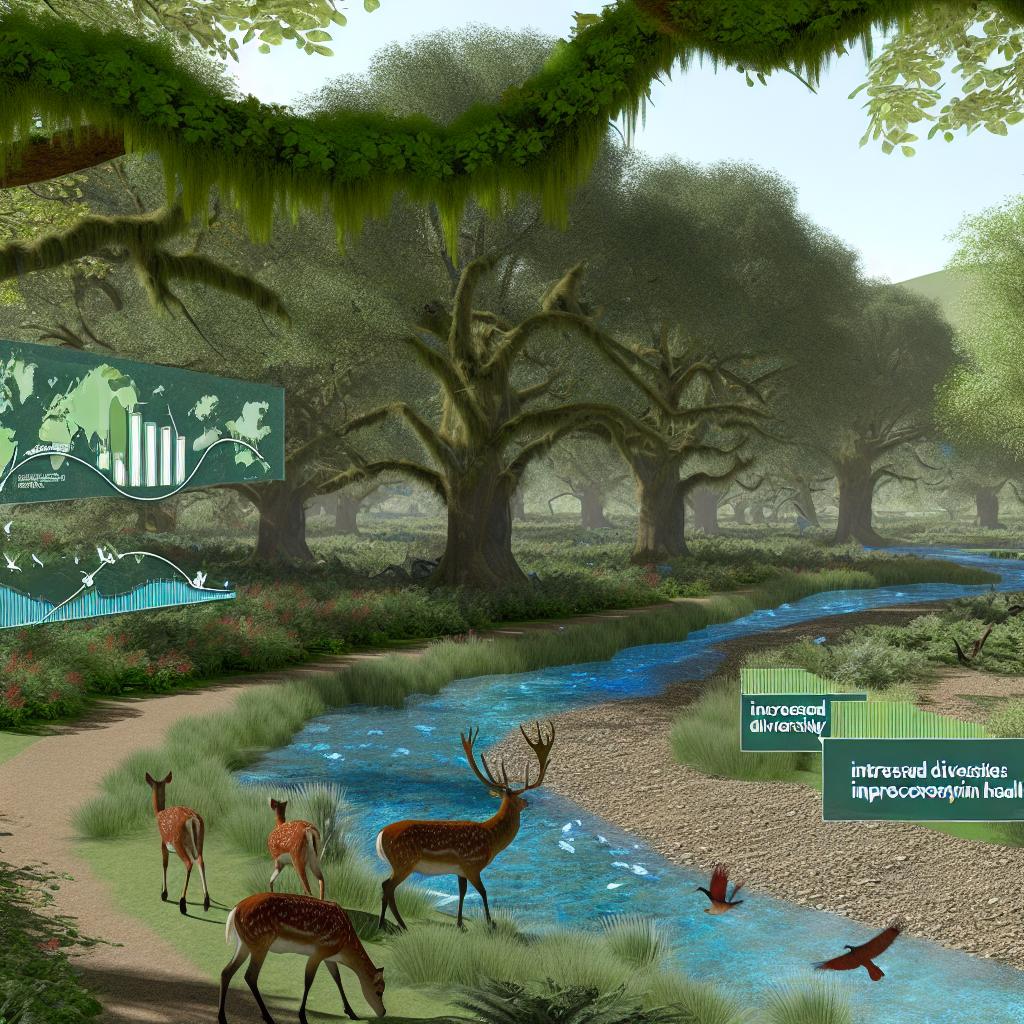
Rewildering in National Parks: Success Stories
Introduction
Rewildering, or rewilding, is a conservation initiative focused on re-establishing and maintaining natural processes within ecosystems, essentially giving nature the room to recover its inherent dynamics. This conservation strategy primarily involves several significant actions: reintroducing native species that have been diminished or eradicated, dismantling human-made obstructions that alter natural habitats, and enhancing the connectivity between different ecosystems. By implementing these strategies, rewildering aims to create self-sustaining environments that are robust, diverse, and capable of adapting to changes. Over the years, national parks worldwide have embraced rewildering with tangible success, tapping into the inherent resilience of nature to bring about ecosystem restoration at multiple levels.
Yellowstone National Park, USA
Yellowstone National Park is often heralded as a groundbreaking example of successful rewildering efforts, notably through the reintroduction of gray wolves. In the early 20th century, predators such as gray wolves were eliminated from Yellowstone, which led to a proliferating elk population. In turn, this elk overpopulation resulted in overgrazing, adversely affecting the vegetation and, consequently, many dependent animal species.
In the mid-1990s, gray wolves were reintroduced, marking the start of a complex transformation of the park’s ecological balance. Predatory pressures from the wolves modified the behavior and size of the elk population, preventing them from over-browsing in vulnerable areas. As a result, vegetation like willows and aspens experienced significant recovery. The resurgence of these plants created favorable conditions for other species, notably beavers, which rely on these trees for dam-building materials. As the beaver population increased, their dams created wetlands, supporting a diverse array of plant and animal life, broadening the ecological recovery across the park.
Furthermore, changes prompted by this rewildering project trickled down to the area’s physical environment. The stabilized riverbanks, enriched by increased plant growth, reduced erosion and created more robust aquatic ecosystems. Yellowstone’s wolf reintroduction stands out not just as a conservation success but as a masterclass in how altering a single variable in an ecosystem can generate widespread and beneficial environmental consequences.
Glenveagh National Park, Ireland
Glenveagh National Park in Ireland presents another illuminating instance of successful rewildering through the reintroduction of apex predators, this time in the form of the golden eagle. In Ireland, golden eagles vanished by the early 20th century due to habitat destruction, human persecution, and depletion of prey. The absence of this majestic bird disrupted the ecological equilibrium, affecting biodiversity.
The year 2000 marked the bold commencement of a golden eagle reintroduction program in this national park. Birds from Scotland were released into Glenveagh’s wilderness, re-establishing a presence that had been missing for decades. Over the years, these eagles successfully adapted and began breeding, culminating in the formation of a sustainable population. The return of the golden eagle has been pivotal in restoring the area’s ecological balance. The presence of these predators helps control smaller mammal and bird populations, which benefits the ecosystem structure and promotes biodiversity.
This successful reintroduction has provided a platform for increased community engagement and education regarding conservation efforts, cultivating a renewed interest in sustaining and enhancing Ireland’s natural heritage. The process has not only enriched the local fauna but has created a legacy of environmental stewardship and awareness valuable for future conservation projects.
Knee Hill National Park, Australia
Knee Hill National Park in Australia offers yet another testament to the adaptive power of rewildering efforts. The reintroduction of the western barred bandicoot—small marsupials critically endangered due to habitat destruction and predation by invasive species—stands as a cornerstone of these efforts. Concerted strategies were devised to facilitate their revival, including the establishment of predator-proof fencing and intensive habitat management practices aimed at reducing threats from non-native predators such as foxes and feral cats.
Thanks to these interventions, the park has witnessed a significant increase in the bandicoot population. Their return has been instrumental in regulating the proliferation of invasive species, contributing to the recovery of native plant life and alteration of ecological processes. The western barred bandicoots help to maintain soil health by aerating soil while foraging, which consequently promotes plant growth and diversification. Such improvement and stabilization of the flora further aid the broader ecosystem, offering cover and food resources to a variety of predatory and herbivorous species.
The project at Knee Hill exemplifies how targeted rewildering efforts can achieve substantial progress in enhancing ecological resilience against the backdrop of human impacts and environmental changes. Through strategic planning and essential ecological insights, Knee Hill’s rewilding accomplishments illustrate the dynamic interplay between wildlife reintroductions and habitat rehabilitation.
Conclusion
The foregoing examples from Yellowstone National Park, Glenveagh National Park, and Knee Hill National Park lucidly illustrate the triumphant potential of rewildering endeavors. By strategically reintroducing essential animal species and dismantling the disturbances to natural processes, these initiatives have precipitated notable ecosystem renewal and resilience. As such, they serve as potent models that underscore the feasibility and significance of conservation efforts focused on natural restoration.
By emphasizing natural processes and species diversity, rewildering fosters ecosystems that are not only more resilient to environmental changes but also capable of offering ecological services essential to biodiversity and human well-being. Moreover, it instills an ecological consciousness among communities and fosters stewardship, all while systematically addressing prior environmental degradation.
Continued dedication to and support for rewildering programs is critical for extending their transformative impact. As these efforts mature, they forge pathways towards replicable methodologies applicable across diverse geographical regions, outside the boundaries of national parks. Such concerted actions promise not only revitalization of ecological networks but enhancement of global biodiversity and climate stability crucial for the long-term well-being of our planet.